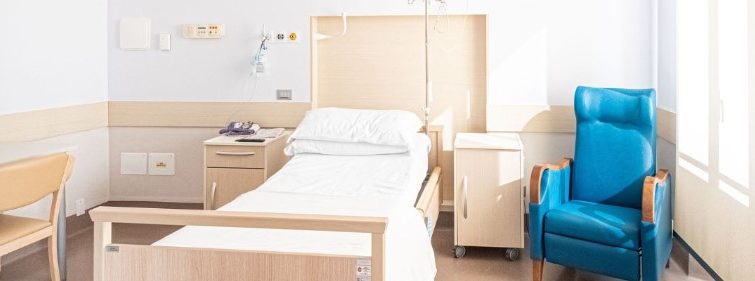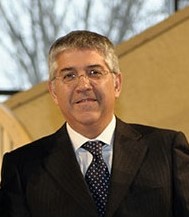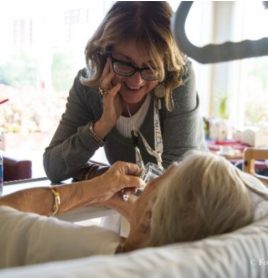
In its decision no. 135, of 18 July last, the Italian Constitutional Court confirmed the four requirements for access to assisted suicide, previously established by the same Court in decision no. 242/2019. These are: irreversible nature of the pathology, presence of physical or psychological pain deemed intolerable by the patient, dependence on life-sustaining treatment, and the patient’s capacity to make free and informed decisions. However, the Court extended the scope of the concept of “life-sustaining treatment” and reiterated “the urgent demand, expressed on previous occasions, that all patients be granted effective access to appropriate palliative care in order to control their suffering.” SIR interviewed Dr Massimo Damini, Specialist in Palliative Care and Director of the San Camillo Hospice in Cremona, run by the Camillians, Medical Director of the Palliative Care-Hospice Centre of the Little Daughters of Parma.
 Dr Damini, for the past three decades you have faced situations of extreme suffering and terminal illness on a daily basis. In the end-of-life debate, perhaps the most controversial point remains the definition of life-sustaining treatment.
Dr Damini, for the past three decades you have faced situations of extreme suffering and terminal illness on a daily basis. In the end-of-life debate, perhaps the most controversial point remains the definition of life-sustaining treatment.
It is a very controversial issue, both from a clinical and a bioethical perspective. However, this definition should not be separated from the time dimension, i.e. how much life is left.
Have you ever been confronted with requests for assistance in dying?
I have; patients have occasionally said to me: “Doctor, please do something to end this situation quickly” or “give me a shot”.
I do not deny that these requests do exist, but they are very few.
In our experience, this humanly understandable request comes not so much from a desire to die as from a fear of suffering; it is a request for help, relief from pain, companionship. I can say with certainty that in my three decades of experience in hospices, the provision of effective palliative care has always been successful, so much so that I have never had a patient who refused it and remained firm in their decision. A decision I would have respected.
What do you mean by that?
If a patient were to say to me: “Doctor, this situation is still unbearable for me”, I would have to respect their choice, even though I would not agree with it and, of course, would not carry it out. I understand this from a human point of view, but from a deontological-professional angle, I do not consider it my role to decide whether a person should live or die.
On the subject of life-sustaining treatment, the Court offers a ‘broader’ interpretation with regard to the limits reaffirmed a few weeks ago by the National Bioethics Committee, including ‘nursing’ practices.
As I understand it, the Constitutional Court intends to broaden the scope to include procedures that are more closely related to nursing, such as the manual evacuation of the bowels, the insertion of catheters or the suctioning of mucus; procedures which, if they were not carried out, would become a source of further suffering, i.e. exactly the opposite. It would be counterproductive not to do them. However, I think it is wrong to focus attention and discussion only on life-sustaining treatments; the patient’s ability to make decisions and their awareness are equally important.
How many patients are fully aware of their condition, in your experience?
A very small number; in the vast majority of cases, the family prefers – and asks us – not to reveal the whole truth. The difference that palliative care makes, before taking a drastic decision based on a purely technocratic approach in the presence of these four conditions, is a path of awareness, care and trust. Not a small difference. Therefore,
To the four requirements I would add a fifth, which is essential: access to palliative care.
The discussion should not become polarised between those who are for and those who are against assisted suicide, without addressing these aspects that can make a difference;
I feel it is my duty to emphasise the role of humanising medicine.
Doctors are born, they study and they are trained to prevent and to fight diseases if possible, to cure them if possible, but also to be at the side of their patients when they are suffering, when they can provide support and relief.
 Is this enough to solve all the problems?
Is this enough to solve all the problems?
Definitely not, but even for those cases that cannot be cured, there can always be treatment until the very end, thus reducing the conditions that may lead some to make different choices, but they will do so on the basis of a situation in which no stone is left unturned. It should be noted that
It’s much harder for a doctor to deal with illness and suffering than it is to take drastic steps to solve the problem.
As mentioned before, from a human point of view, certain requests dictated by fear and desperation are understandable even for us doctors, but that’s where medicine is called upon to use its best weapons to protect life.
Judgement No. 135 also stresses the need to protect “the most vulnerable” from possible abuses, foremost among which is the “social pressure” that leads these patients to perceive themselves as a burden to others “with the effect of inducing them to decide to ask that their life be terminated”.
There is an insidious reason for this: in the early stages of the disease, many people feel socially worthless and a burden on family members, especially in the most vulnerable households. Society has undergone considerable changes in recent years. We have experienced very difficult situations of single-parent households or elderly couples in which the patient has no one to look after them because their partner is also in poor health.
Palliative sedation is also the subject of debate. What does it involve?
First of all I want to debunk a stereotype: the idea held by some that palliative sedation is administered in hospices as a sugarcoated form of euthanasia is totally false. Palliative sedation is performed in a third, perhaps a quarter of patients; it is not automatically performed on all patients who come to us, but rather a practice to control their suffering when it becomes intractable – i.e. when it no longer responds to treatment – and in a situation of imminent death. But there is another point I would like to clarify.
Which is …?
The role of the doctor is apparently reduced to that of a mere executor of a declared decision in the name of the so-called principle of self-determination, and thus he becomes nothing more than an instrument for carrying out or omitting procedures in the event that treatment is refused. Everything has to be seen in context. Either we approach issues from a technical, dispassionate point of view, or – and this makes all the difference – we approach them in the context of palliative care, i.e. as part of a communicative and relational bond built up over time by gaining the patient’s trust. How often have I heard patients tell me that they do not want a urinary catheter! However, when I explain to them the benefits of having it inserted compared to the risks of not having it inserted, the patient eventually comes to trust and accept it. There is a degree of autonomy in the doctor’s decisions, professional dignity and personal space that must be protected.
We are not instruments of war, tormenting patients with the tools that technology provides,
as some attempt to describe us. Unlike some family members, who occasionally resort to false information circulated on the Internet, we simply have no intention to renounce our role as interlocutors on the basis of the knowledge we possess.
 How difficult is it to give answers in the face of end-of-life issues?
How difficult is it to give answers in the face of end-of-life issues?
Sometimes I find it difficult to provide the answers. But I always strive to resolve situations in the context of a common journey. If there is no time to build a relationship – some patients come to us a few days before they die – there is always an opportunity to accompany them to a dignified death by managing their suffering. It’s a complex situation, fraught with variables and pitfalls. But the over-automation of a process of care, especially at the end of life, is a frightening prospect.
What have you learned after thirty years of working in hospices and palliative care?
I have learnt that one should always approach these situations on tiptoes,
trying to understand the family dynamics and the person’s value system. The therapeutic option is the final decision in that it must be placed in a broader context of comprehension, because the real needs and aspirations of our patients are often not what we would expect.









